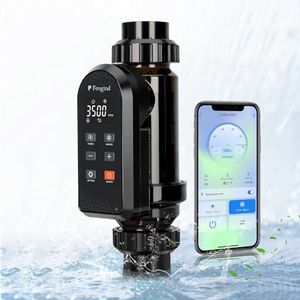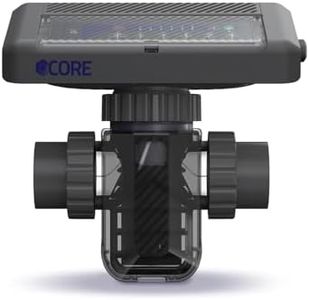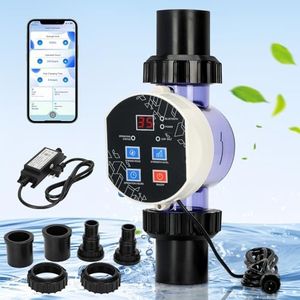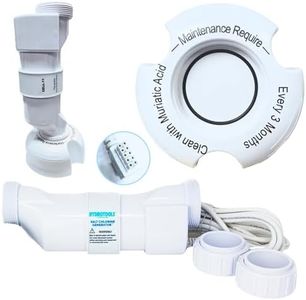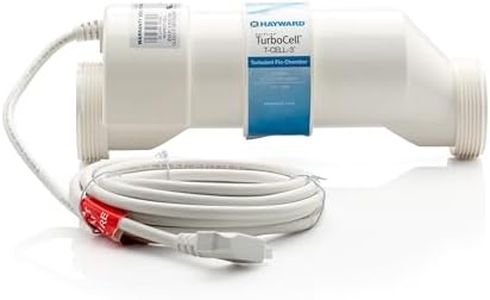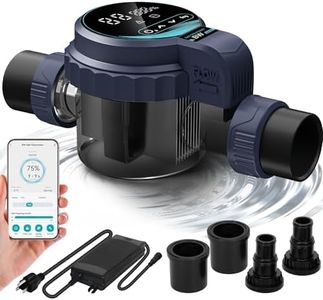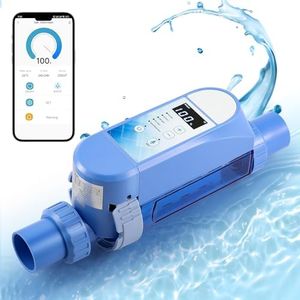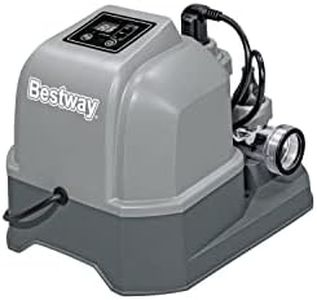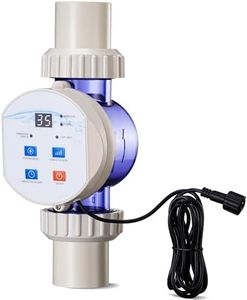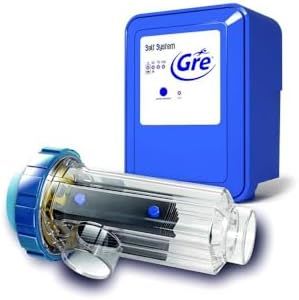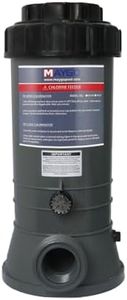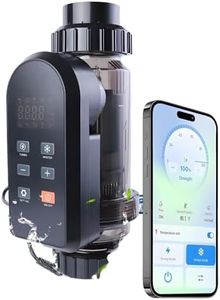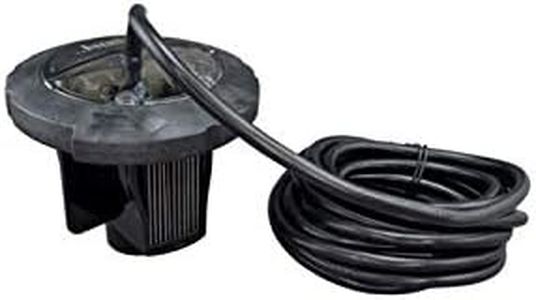We Use CookiesWe use cookies to enhance the security, performance,
functionality and for analytical and promotional activities. By continuing to browse this site you
are agreeing to our privacy policy
10 Best Salt Chlorinators
From leading brands and best sellers available on the web.Buying Guide for the Best Salt Chlorinators
Choosing a salt-chlorinator for your pool is about finding a system that matches your pool size, your maintenance expectations, and your desired swimming experience. Salt-chlorinators automatically generate chlorine from salt, providing consistent sanitation with less hands-on work. When shopping, focus on the main specifications that affect performance, ease of use, and durability, so you can enjoy your pool with minimal hassle.Pool Capacity SupportedPool capacity supported defines how many gallons or liters of water the chlorinator can effectively sanitize. This is vital since using a chlorinator rated for a smaller pool in a bigger one will result in poor sanitation, while an overly large system might cost more without extra benefit. Typically, models are segmented for small (up to 15,000 gallons), medium (15,000 to 30,000 gallons), and large pools (over 30,000 gallons). Measure your pool volume carefully, and choose a system that is rated for your size or slightly higher, to ensure efficient operation and accommodate heavy usage or hotter climates.
Chlorine OutputChlorine output quantifies how much chlorine the system can produce, usually in pounds or grams per day. This figure affects how well the system keeps up with pool sanitation needs, especially during periods of heavy use or hot weather. Lower-output units (under 1 pound/day) may suit smaller or lightly used pools, while higher-output models (1–2 pounds/day or more) are better for larger or frequently used pools. Choose based on expected pool usage and local climate: busier or warmer environments require higher output.
Control FeaturesControl features refer to how much you can adjust or monitor the operation of the salt-chlorinator. Basic models have manual controls like simple dials, while more advanced ones offer digital displays, programmable timers, or remote monitoring. If you prefer 'set-and-forget' operation or want more convenience for adjusting chlorine levels, look for advanced controls. If you’re comfortable checking and tweaking occasionally, a simple system might suffice.
Cell LifespanCell lifespan indicates how long the salt cell (the part of the system that generates chlorine) is expected to last, usually described in operating hours or years. A longer lifespan means less frequent replacements and lower long-term maintenance. Entry-level cells might last 3,000–5,000 hours, while high-end ones last 8,000 hours or more. If you want fewer interruptions and less ongoing maintenance, choose models with longer cell lifespans, especially if your pool is used year-round.
Self-Cleaning FunctionSelf-cleaning is a feature where the chlorinator automatically reverses polarity to minimize scale buildup on the cell. This reduces manual cleaning and extends cell life. Some models have fully automatic self-cleaning, while others require more frequent manual attention. If routine maintenance is challenging for you or your water is hard (high in minerals), prioritize a good self-cleaning feature.
Salt Level RangeThe salt level range specifies the concentration of salt required in your pool water for the chlorinator to work properly. Some systems have a broad operating range, making them flexible and forgiving if pool salt levels fluctuate, while others need narrow, precise salt levels. If maintaining pool chemistry isn’t your favorite chore, a wider operating range will make your life easier and help the system stay effective.
